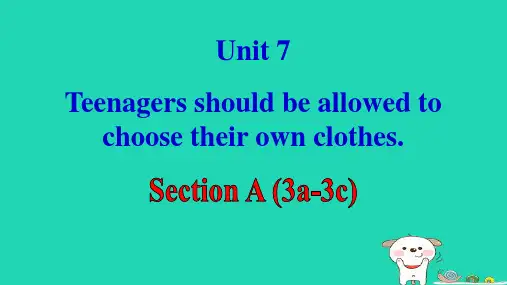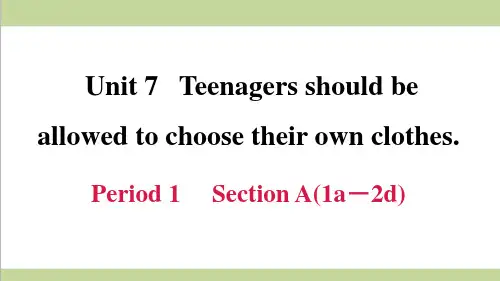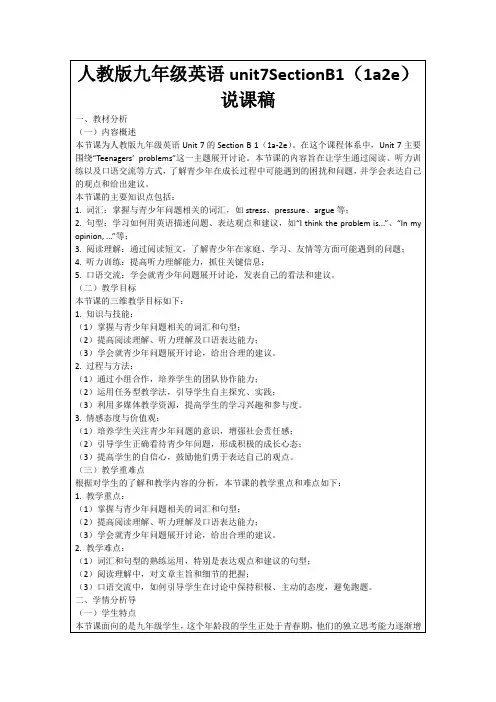九年级英语unit7课件1
- 格式:pptx
- 大小:2.03 MB
- 文档页数:36
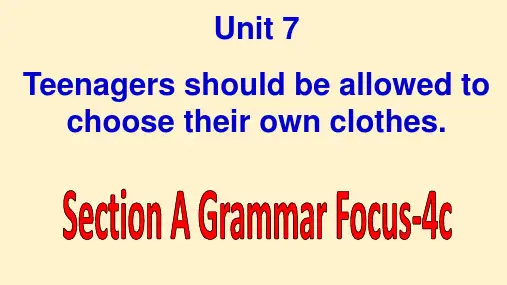

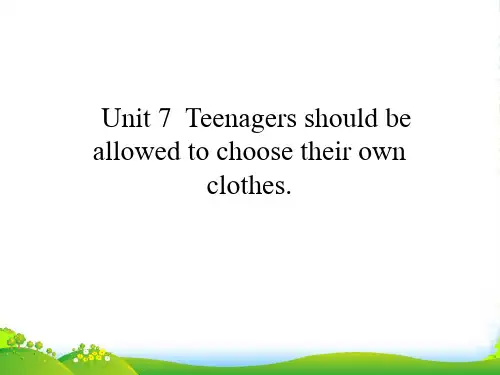
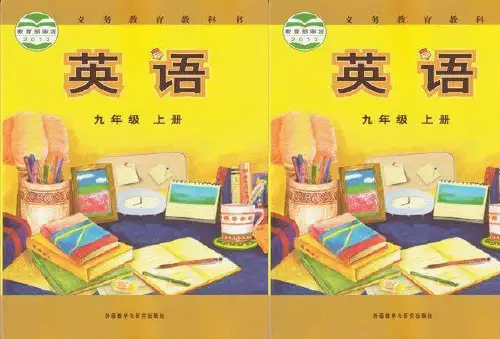
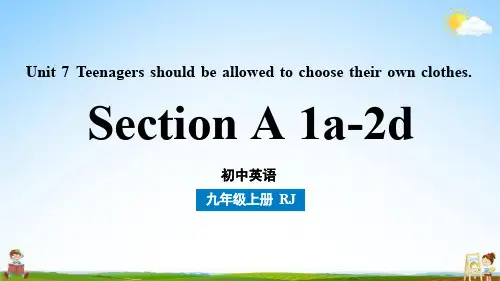
Unit7Teenagers should be allowed to choose their own clothes. Section A1a-2dRJLearning goalsNew words: license, safety, smoke, part-time, pierceSentences:① I don’t think sixteen-year-olds should be allowed to drive.② Teenagers should not be allowed to smoke.smokev. 吸烟; 冒烟 n. 烟Do you think teenagers should …?fight with othersWarming UpDo you think teenagers should …?driveget ears piercedLook at the small picture on the left.• What’s in the boy’s hand?• Where is he?• What is he doing?Look at the small picture in the middle.• What’s the girl doing?•What’s in her hands?1aLook at the small picture on the right.• What’s on her ears?• Is she getting her ears pierced?• How do you know ?Look at the big picture in the middle.• What’s the relationshipbetween the two speakers?• Why do you think so?No way! • What does “No way” mean?I don’t think sixteen-year-olds should be allowed to drive. • What does “safety” mean?Can I go to the shopping center with John? He just got his driver’s license.I’m worried about your safety.1a Read the statements below. Circle A for agree or D for disagree.1. Teenagers should not be allowed to smoke. A D2. Sixteen-year-olds should be allowed to drive. A D16岁的青少年3. Students should not be allowed to have part-time jobs.adj.&adv.兼职(的) A Dget/have sth. done 使某事被做 4. Sixteen-year-olds should be allowed to get their ears pierced. A D 5. Teenagers should be allowed to choose their own clothes. 被允许做· · · · · · A DLanguage Points1. He just got his driver’s license. (教材P49 1a) license /'laɪsns/ n.证;证件license (美式英语) = licence (英式英语) ,意为 “证;证件” ,通常作可数名词。

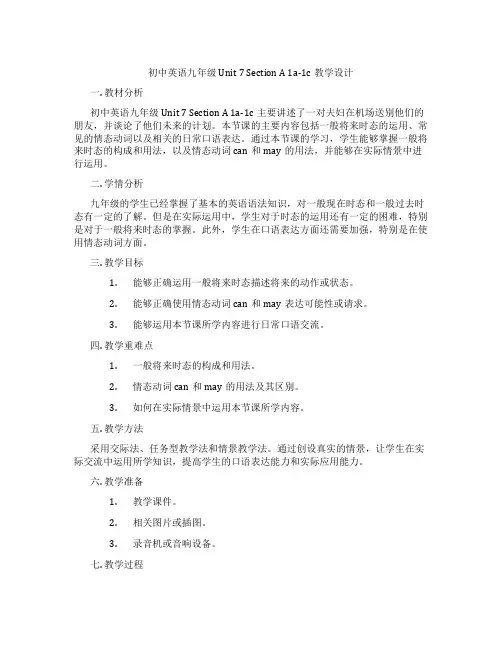
初中英语九年级 Unit 7 Section A 1a-1c教学设计一. 教材分析初中英语九年级Unit 7 Section A 1a-1c主要讲述了一对夫妇在机场送别他们的朋友,并谈论了他们未来的计划。
本节课的主要内容包括一般将来时态的运用、常见的情态动词以及相关的日常口语表达。
通过本节课的学习,学生能够掌握一般将来时态的构成和用法,以及情态动词can和may的用法,并能够在实际情景中进行运用。
二. 学情分析九年级的学生已经掌握了基本的英语语法知识,对一般现在时态和一般过去时态有一定的了解。
但是在实际运用中,学生对于时态的运用还有一定的困难,特别是对于一般将来时态的掌握。
此外,学生在口语表达方面还需要加强,特别是在使用情态动词方面。
三. 教学目标1.能够正确运用一般将来时态描述将来的动作或状态。
2.能够正确使用情态动词can和may表达可能性或请求。
3.能够运用本节课所学内容进行日常口语交流。
四. 教学重难点1.一般将来时态的构成和用法。
2.情态动词can和may的用法及其区别。
3.如何在实际情景中运用本节课所学内容。
五. 教学方法采用交际法、任务型教学法和情景教学法。
通过创设真实的情景,让学生在实际交流中运用所学知识,提高学生的口语表达能力和实际应用能力。
六. 教学准备1.教学课件。
2.相关图片或插图。
3.录音机或音响设备。
七. 教学过程1.导入(5分钟)通过播放一段机场送别的录音,让学生听后回答一些问题,如:“Who are they?”, “Where are they going?”等,引导学生进入本节课的主题。
2.呈现(10分钟)教师通过展示图片或插图,呈现本节课的主要情景,同时引导学生观察并发现一般将来时态的构成和用法。
然后,教师通过讲解和举例,讲解情态动词can和may的用法及其区别。
3.操练(10分钟)学生分组进行角色扮演,模拟机场送别的场景,运用一般将来时态和情态动词can、may进行对话。
